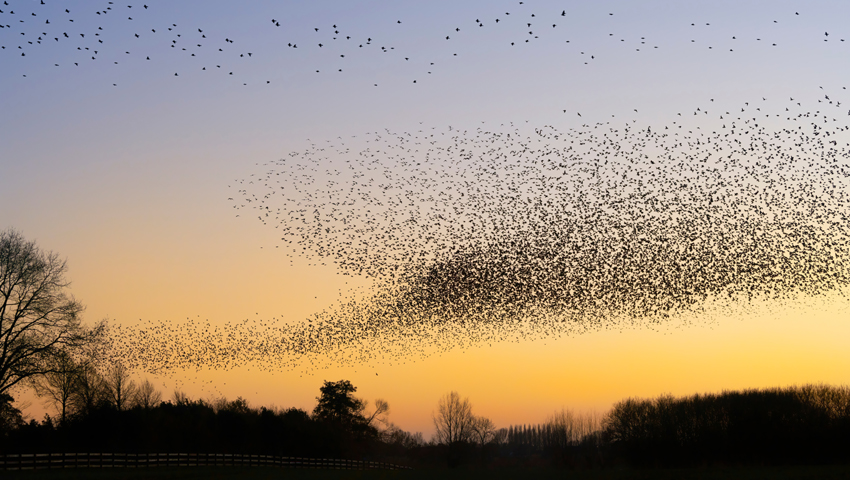New research by scientists at The James Hutton Institute, University of Dundee, SRUC and the University of Sheffield has found soil bacteria moving in patterns similar to how birds flock or fish school.
A spokesperson from The James Hutton Institute in Scotland said, “Bacteria moving through soil is not well understood because it’s hard to study. In this research, scientists used live imaging to watch groups of B. subtilis bacteria moving together in a coordinated way through a material that mimics soil. These bacteria travelled toward plant roots and gathered around them, moving in patterns similar to how birds flock or fish school.
“The study found that this movement is likely influenced by signals the bacteria send to each other and by the physical conditions in the soil-like material. This research helps us understand how bacteria move through soil and interact with their environment.”
Although migrations are essential for soil microorganisms to exploit scarce and heterogeneously distributed resources, bacterial mobility in soil remains poorly studied due to experimental limitations.
In this study, time-lapse images collected using live microscopy techniques captured collective and coordinated groups of B. subtilis cells exhibiting “crowd movement”.
Groups of B. subtilis cells moved through transparent soil (nafion polymer with particle size resembling sand) toward plant roots and re-arranged dynamically around root tips in the form of elongating and retracting “flocks” resembling collective behaviour usually associated with higher organisms (e.g., bird flocks or fish schools).
Genetic analysis revealed B. subtilis flocks are likely driven by the diffusion of extracellular signalling molecules (e.g., chemotaxis, quorum sensing) and may be impacted by the physical obstacles and hydrodynamics encountered in the soil like environment. The findings advance understanding of bacterial migration through soil matrices and expand known behaviours for coordinated bacterial movement.
Co-author, LX Dupuy said, “From a microbial perspective, soil is a nutritionally poor environment. The ability of microorganisms to move and exploit rare and distant sources of nutrients, such as plant root exudates, is therefore important for the maintenance of microbial diversity and soil ecosystem functioning.
“The mobility of bacteria in soil is considered dependent on several life strategies, including sensing specific compounds released by the root and migrating towards them by means of chemotaxis. Different forms of movement are possible, such as swimming in water films or twitching and swarming over solid obstacles. Microorganisms likely need to coordinate and act as a group, using quorum sensing to navigate the complex soil matrix and attach to the root surface to form biofilm.
“We have advanced live imaging capabilities by capturing and analysing the movement of fluorescently labelled Bacillus subtilis strains around roots growing in a transparent ionomer soil matrix. As a well-studied model organism, B. subtilis is known for its plant-root interactions, with some members of the genus used as biocontrol agents. In our system, time-lapse images were collected using a custom-built light sheet microscope, allowing analyses of 3D live datasets of root-microbe interactions.
“The study revealed an unexpected new form of coordinated movement used by B. subtilis to navigate the soil matrix and interact with the surfaces of plant roots. This coordinated group response, referred to as crowd movement, resembles behaviour normally associated with higher organisms such as migrating herds, flocking birds, schools of fish and swarms of insects.”
Read the paper, Novel form of collective movement by soil bacteria
